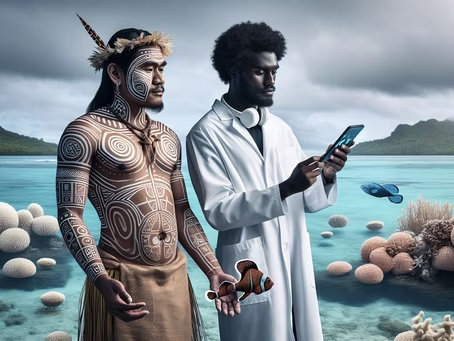Introduction
The convergence of Indigenous knowledge with modern science is transforming marine conservation. This holistic approach honors traditional practices while embracing technology, creating new pathways for protecting biodiversity, governance, and education. Beyond ecological gains, it fosters social equity and sustainable development within Indigenous communities. By weaving together these complementary systems, we can ensure the resilience of both oceans and people.
Bridging Ancient Wisdom and Ocean Science
Understanding Indigenous Marine Practices
Indigenous marine practices, refined over centuries, reveal deep respect and sustainable use of the ocean. These traditions include:
- Recognizing seasonal patterns of marine life
- Selective fishing techniques to safeguard species
- Customary laws protecting critical habitats
When integrated with modern marine science, these insights create a powerful framework for long-term conservation.
Collaboration in Marine Biology and Biochemistry
Partnerships between Indigenous communities and scientists are unlocking new understanding of ecosystems. Examples include:
- Shellfish and coastal management practices informing research
- Habitat restoration projects benefiting from traditional oyster reef knowledge
- Sustainable aquaculture initiatives like South Coast Seaweed
These collaborations show that conservation succeeds when cultural respect and scientific research move forward together.
Integrating Governance and Community Leadership
Traditional Governance in Modern Conservation
Indigenous governance systems have long managed natural resources with sustainability in mind. Their integration into modern conservation ensures local leadership, cultural relevance, and stronger community resilience.
Community-Based Monitoring
Indigenous-led monitoring combines sharp observation skills with scientific tools to track ecosystem change. This approach strengthens biodiversity protection while supporting food security and community livelihoods.
Navigating Co-Management
Two-Eyed Seeing in Practice
The concept of Two-Eyed Seeing combines Indigenous perspectives with Western science, offering richer marine management strategies. Key principles include:
- Valuing traditional ecological knowledge alongside data
- Engaging Indigenous communities as equal partners
- Adapting management to local cultural practices
This dual-lens approach creates inclusive conservation that is both effective and just.
Legal Frameworks and Indigenous Rights
Formal recognition of Indigenous rights within conservation law ensures equity and effectiveness. Documenting traditional resource use and involving communities in planning creates governance rooted in both wisdom and justice.
Conservation with a Conscience
Social Equity in Marine Protection
Marine conservation is strongest when it addresses social justice. By creating safe spaces, amplifying women’s voices, and embracing intersectional perspectives, conservation strategies can promote equity and resilience alongside ecological health.
Prioritizing Community Well-Being
Healthy oceans and healthy communities are inseparable. Conservation must support livelihoods and cultural values, ensuring that strategies strengthen both ecosystems and the people who depend on them.
Technology and Indigenous Insights
Mapping and Classification Systems
Modern tools like GIS and remote sensing are being developed with Indigenous input. This ensures that traditional knowledge and legacy data remain central to conservation, enriching maps with cultural and ecological meaning.
Integrating Legacy Data
By linking traditional knowledge with scientific databases, conservationists create systems that respect history while guiding future decision-making. This fusion deepens understanding of marine ecosystems across generations.
Indigenous Leadership in Aquaculture
Innovations and Participation
Indigenous-led aquaculture initiatives pioneer sustainable practices in shellfish and seaweed cultivation. Empowering Aboriginal and Torres Strait Islander communities ensures strategies that are culturally appropriate, ecologically sound, and economically beneficial.
Education and Knowledge Sharing
Incorporating Indigenous Perspectives
Marine education is evolving to include Indigenous worldviews. Concepts like Two-Eyed Seeing and Two-Ways Thinking foster respect, holistic learning, and stronger environmental stewardship in future generations.
Intersectional and Inclusive Approaches
By weaving feminist and intersectional perspectives into education, marine science becomes more inclusive and responsive. This integration strengthens conservation outcomes while addressing social equity.
Conclusion
The integration of Indigenous knowledge and modern science offers a transformative path for marine conservation. Together, they build resilient ecosystems, protect biodiversity, and ensure that conservation is equitable and culturally grounded. Honoring both ancient wisdom and technological innovation, this partnership paves the way for a sustainable future for our oceans and communities.

